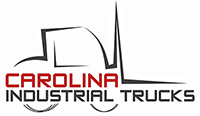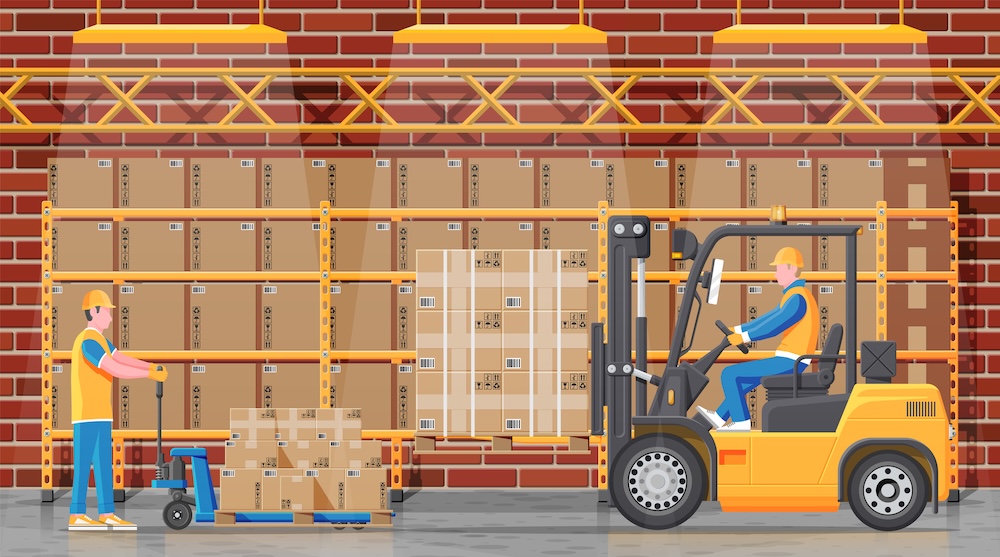Everything to Include in Your Forklift Daily Inspection
11/24/2020
CITrucks
Checklists make it easier to maintain a safe workplace, so here's a daily forklift inspection checklist to help you ensure the safe and effective operation.
There are about 34,900 serious injuries each year as a result of forklift accidents. This is according to the Occupational Safety and Health Administration (OSHA). Unfortunately, roughly 85 of these accidents end with fatalities.
This is a scary statistic for businesses that use forklifts daily. But these accidents are avoidable. They are a reminder of the importance of daily forklift inspection.
Daily forklift inspections are legally required by OSHA. Their guidelines stipulate daily inspection before using the forklift. Businesses with 24-hour operations should conduct inspections before every shift change.
The Importance of a Safety Checklist
A safety checklist helps businesses avoid accidents. It also ensures that equipment is in good working order. These help businesses avoid extra costs due to work injuries and equipment downtime.
These are two of the more important reasons companies should use safety checklists. Here are a few other reasons why a forklift checklist is important for your business:
- It helps avoid possible equipment issues before they occur
- It helps identify equipment maintenance issues
- Regular maintenance extends the life of the forklift
- It identifies failures and issues that may contribute to forklift tip-over or other accidents
- It keeps the forklift operators and other employees safe
- It promotes a culture of workplace safety as it becomes a part of the business’s safety protocol
- It reduces accidents and improves the company's safety record
- Forklift operators will be more confident using the equipment, knowing that it has been thoroughly checked and is safe
- It lets your workers know you care, and they will be more motivated to provide better service to the company and customers
- Catching equipment issues early allows companies to use alternative measures such as the rental of equipment in the interim
- It is an effective audit tool for the company
Safety should be an integral part of any business. One way to ensure that employees adhere to workplace safety rules is to make them accountable by providing a physical checklist.
Forklift Checklist Requirements
Your forklift checklist should include specific items. It should cover all OSHA requirements and include all the elements that ensure optimal forklift safety.
Tailor your checklist to the make and model of the forklift. You should consult the manufacturer's maintenance guide and the owner's manual and incorporate their guidelines which should also include the operator's responsibilities.
But be sure to also adapt it to your facility, taking into consideration the physical space, company culture and general workplace safety standards.
The checklist should be a part of your standard operating procedure (SOP). Itemize it for ease of reference and make sign off upon completion a requirement to ensure accountability.
Your inspection checklist should be able to guide your operators. Completion time should be between five to fifteen minutes.
What to Include on Your Daily Forklift Inspection?
Your daily forklift inspection should include pre-operation and operation inspections.
Pre-operation inspections include a visual check while the engine is off. It should include a check of the following items:
- All fluid levels - water, oil, and hydraulic fluid
- Any visible defects - cracks, leaks, hydraulic hoses and mast chains
- Tire pressure and condition, including cuts and gouges
- Fork conditions, including the top clip retaining pin and heel
- Forklift load backrest extension
- Nameplates and safety decals should be in place and legible and should match the model, serial numbers and attachments
- Truck Operator's manual should be legible
- Operator compartment which should be free of debris and grease
- The functionality of all safety devices including the seat belt
There may be additional items included on the checklist depending on the type of forklift.
Liquid Propane Forklift checks should include:
- Scan for leaks
- Properly mounted tank
- The fit of the tank within the profile of the truck
- Pressure relief valve pointing upwards
- Dents or cracks in the tank
- Connectors and hose
- Tank restraint brackets
Electric Forklift checks should include:
- Hood latch
- Frayed or exposed wires in cables and connectors
- Electrolyte levels
- Battery restraints
Internal Combustion Forklift checks should include:
- Engine oil
- Hood latch
- Brake reservoir
- Radiator
- Engine Coolant
- Hoses and Belts
- Air Filter
Conduct the standard tests above, prior to starting the forklift's engine.
Operational inspection checks are conducted while the forklift engine is running. It includes checks of the following items:
- Hour meter
- Accelerator linkage
- Hoist and lowering control
- Forward and back tilt control
- Brakes
- Steering
- Forward and reverse drive control
- Attachment control
- Lights
- Horn
- Back-up alarm and inch control (some forklifts are not equipped with these, but it is highly recommended)
Immediately report any strange noises heard or vibrations observed during the operational inspection.
Checklists provide a guide and will greatly reduce accidents due to faulty equipment. However, they are not foolproof, and operators should be on the lookout for any potential hazards while operating the machinery.
These may include:
- Leaks
- Overheating
- Breakdowns due to mechanical failure
- Fire
Remove forklifts from operation if you observe any defects or abnormalities. OSHA also provides a comprehensive list of conditions that should result in the forklift being pulled from service immediately.

Avoid Tip-Over Accidents
Forklift tip-over is one of the main causes of forklift accidents. Follow these practical measures to avoid tip-over accidents or injuries:
- Maintain the weight load capacity of the forklift
- Don't drive with unstable loads
- Use caution for wide or tall loads
- Follow speed limits
- Avoid dips, edges and potholes
- Avoid braking suddenly
Forklift Maintenance Guidelines
Regular forklift maintenance helps limit the occurrence of defects. Scheduled maintenance should be a standard part of ensuring forklift safety.
OSHA recommends the following maintenance guidelines:
- Perform preventative maintenance according to the manufacturer's recommendations
- Do not operate unsafe forklifts or those requiring maintenance
- Only authorized personnel should perform forklift repairs
- Keep forklifts clean - no debris, grease, excess oil or lint
- Use non-combustible agents to clean forklifts
These guidelines, along with a standard checklist will help ensure forklift safety.
Promoting Workplace Safety
The implementation of general safety guidelines helps encourage general workplace safety.
Employers should ensure that their workers have proper forklift training. OSHA also requires formal instruction, workplace evaluation and practical training.
Training should also be in accordance with the manufacturer and class type of forklift. It should also take the work environment into consideration. Maintain safety standards by having retraining sessions every three years.
Workers should wear appropriate clothing. Any clothing, including uniforms should fit well to avoid excess cloth getting caught in the machinery. Safety wear should include safety shoes, hard hats, visibility jackets and glasses.
Forklift operators should always be aware of their environment, regularly scanning their surroundings. They should maintain the speed limit, confirm their route is clear and use the horn when necessary, especially near entrances/doorways and around corners.
Make Forklift Operation Easier
Forklifts are required in many companies. They are convenient and make processes more efficient.
Using them wisely and adhering to safety guidelines will ensure that your company does not become a part of the forklift accident statistics. This should include daily forklift inspection.
We offer many services to help you adhere to OSHA guidelines. Contact us to learn more about proper forklift training and forklift purchase or rental options. We also offer Forklift maintenance and stock a wide range of forklift replacement parts.





